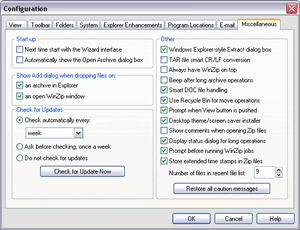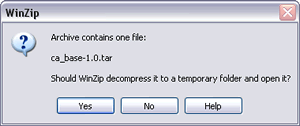English / Spanish
Tools and Techniques for Handling Archived .e00 FilesImport ArcInfo Interchange Files Successfully
 ArcGIS Desktop users at any license level can import .e00 files using tools on the ArcView 8x toolbar in ArcCatalog. |
Many GIS data clearinghouses provide at least some data as ArcInfo Interchange format in zipped files so it is handy to know how to extract and import data supplied in this manner. For GIS users who may not be familiar with ArcInfo Interchange files (also known as .e00 files), this format was developed to move coverages, INFO data files, text files such as ARC Macro Language (AML) files, and other ArcInfo files between machines not connected by a file sharing network. Interchange files contain all coverage information and appropriate INFO data file information in a fixed-length ASCII format.
Even longtime users who are familiar with .e00 files might not know that it does not require an ArcInfo license or an installation of ArcInfo Workstation to import data in this format. Although two tools in ArcToolbox available at the ArcInfo license level—Import From Interchange File tool and Export to Interchange File tool—can be used to interact with .e00 files, ArcGIS Desktop users at any license level can import .e00 files using ArcCatalog and the process described in this tip.
Avoid File Corruption
Typically, .e00 files are posted as zipped files that can be extracted using WinZip. Care must be taken when unzipping and saving these files. A default setting in WinZip can corrupt the archive files as they are being extracted. To avoid this problem, do the following before opening the archive:
- Start WinZip Classic.
- Select Options > Configuration and click the Miscellaneous tab.
- On that tab, uncheck the box next to "TAR file smart CR/LF conversion."
- Open the .e00 file archive in WinZip and unzip it to the desired location.
For .e00 archives with the .tar.gz extension, two additional steps are necessary to avoid corruption problems:
- Double-click the archive to open it in WinZip. A dialog box appears with the following message:
Archive contains x number of files
Should WinZip decompress it to temporary folder and open it? - Click NO.
- In WinZip, select Options > Configuration and click the Miscellaneous tab. On that tab, check the box next to "TAR file smart CR/LF conversion." Extract the file to the desired location.
- Close WinZip.
- Double-click the .tar file that was just created to open it in WinZip. Go to the Configuration dialog box again and uncheck the box next to "TAR file smart CR/LF conversion." Extract the file.
Store Carefully
Specific naming conventions must be observed when handling these files. Do not name .e00 files or the coverages or other files generated from .e00 files with names that are more than 13 characters long, contain spaces, or contain special characters such as #, @, or %. These files cannot reside in a folder that has a name longer than 13 characters, or containing spaces or special characters, and all folders in the directory path must adhere to these naming conventions as well.
Use ArcCatalog to Import an .e00 File
A utility to import an ArcInfo Interchange file is available in ArcCatalog at all license levels.
- In ArcCatalog, choose View > Toolbars > ArcView 8.x Tools.
- Click the Conversion drop-down in the ArcView 8.x Tools toolbar and choose Import from Interchange File.
- In the Import from Interchange File dialog, click the Browse button, locate the .e00 file, and double-click on it, and click Open.
- Click the Browse button next to the Output dataset and navigate to the desired output location, and click Save. Click OK.

